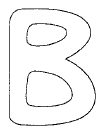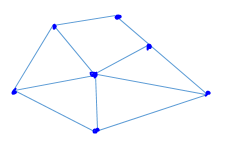This set of Digital Image Processing MCQs focuses on “Regional Descriptors”.
1. What does the total number of pixels in the region defines?
a) Perimeter
b) Area
c) Intensity
d) Brightness
View Answer
Explanation: The area of a region is defined by the total number of pixels in the region. The perimeter is given the number of pixels along the length of the boundary of the region.
2. What is the unit of compactness of a region?
a) Meter
b) Meter2
c) No units
d) Meter-1
View Answer
Explanation: The compactness of a region is defined as (perimeter)2/area. Thus, the compactness of a region is a dimensionless quantity.
3. For which of the following regions, compactness is minimal?
a) Rectangle
b) Square
c) Irregular
d) Disk
View Answer
Explanation: We know that, compactness of a region is defined as (perimeter)2/area. Thus, disk shaped region has a minimal value of this ratio and hence the minimal compactness.
4. Compactness is insensitive to orientation.
a) True
b) False
View Answer
Explanation: With the exception of errors introduced by the rotation of the digital image, we can state that compactness of a region is insensitive to the orientation of the image.
5. Which of the following measures are not used to describe a region?
a) Mean and median of grey values
b) Minimum and maximum of grey values
c) Number of pixels alone
d) Number of pixels above and below mean
View Answer
Explanation: Some of the measures which are used to describe a region are mean and median of grey values, minimum and maximum of grey values and number of pixels above and below mean. The area of the region, i.e., the total number of pixels in the region cannot alone describe the region.
6. We cannot use normalized area as one of the region descriptor.
a) True
b) False
View Answer
Explanation: One of the regional descriptor is normalized area. It can be quite useful to extract information from the image. In satellite images of earth, the data can be refined by normalized it with respect to land mass per region.
7. What is the study of properties of a figure that are unaffected by any deformation?
a) Topology
b) Geography
c) Statistics
d) Deformation
View Answer
Explanation: We can define topology as the study of properties of a figure that are unaffected by any deformation, as long as there is no joining or tearing of the figure. We use topological properties in the region description.
8. On which of the following operation of an image, the topology of the region changes?
a) Stretching
b) Rotation
c) Folding
d) Change in distance measure
View Answer
Explanation: If a topological descriptor is defined by the number of holes in an image, then the number of holes will not vary if the image is stretched or rotated. The number of holes in the region will change only if the image is torn or folded.
9. Topological properties don’t depend on the distance measures.
a) True
b) False
View Answer
Explanation: We know that, as stretching affects distance, topological properties do not depend on the notion of distance or any properties implicitly based on the concept of distance measures.
10. What is the Euler number of the image shown below?

a) 0
b) 1
c) 2
d) -1
View Answer
Explanation: The image shown in the question has two holes and one connected components. So, the Euler number E is given as 1-2=-1.
11. What is the Euler number of a region with polygonal network containing V,Q and F as the number of vertices, edges and faces respectively?
a) V+Q+F
b) V-Q+F
c) V+Q-F
d) V-Q-F
View Answer
Explanation: It is very important to classify the polygonal network. Let V,Q and F denote the number of vertices, edges and faces respectively. Then,
V-Q+F=C-H
Where C,H represents the number of connected components and number of holes in the region respectively. So, the Euler number E is given by V-Q+F.
12. What is the Euler number of the region shown in the figure below?

a) 1
b) -2
c) -1
d) 2
View Answer
Explanation: The polygonal network given in the figure has 7 vertices, 11 edges and 2 faces. Thus the Euler number is given by the formula,
E=V-Q+F=7-11+2=-2.
13. The texture of the region provides measure of which of the following properties?
a) Smoothness alone
b) Coarseness alone
c) Regularity alone
d) Smoothness, coarseness and regularity
View Answer
Explanation: One of the important approach to region description is texture content. This helps to provide the measure of some of the important properties of an image like smoothness, coarseness and regularity of the region.
14. Structural techniques deal with the arrangement of image primitives.
a) True
b) False
View Answer
Explanation: Structural techniques deal with the arrangement of image primitives, such as the description of the texture based on the regularly spaced parallel lines.
15. Which of the following techniques is based on the Fourier transform?
a) Structural
b) Spectral
c) Statistical
d) Topological
View Answer
Explanation: Spectral techniques are based on properties of the Fourier spectrum and are used primarily to detect global periodicity in an image by identifying high energy, narrow peaks in the image.
Sanfoundry Global Education & Learning Series – Digital Image Processing.
To practice MCQs on all areas of Digital Image Processing, here is complete set of 1000+ Multiple Choice Questions and Answers.
If you find a mistake in question / option / answer, kindly take a screenshot and email to [email protected]
- Check Electronics Engineering Books
- Check Digital Image Processing Books
- Practice Electrical Engineering MCQs
- Apply for Electronics Engineering Internship
- Apply for Electrical Engineering Internship
